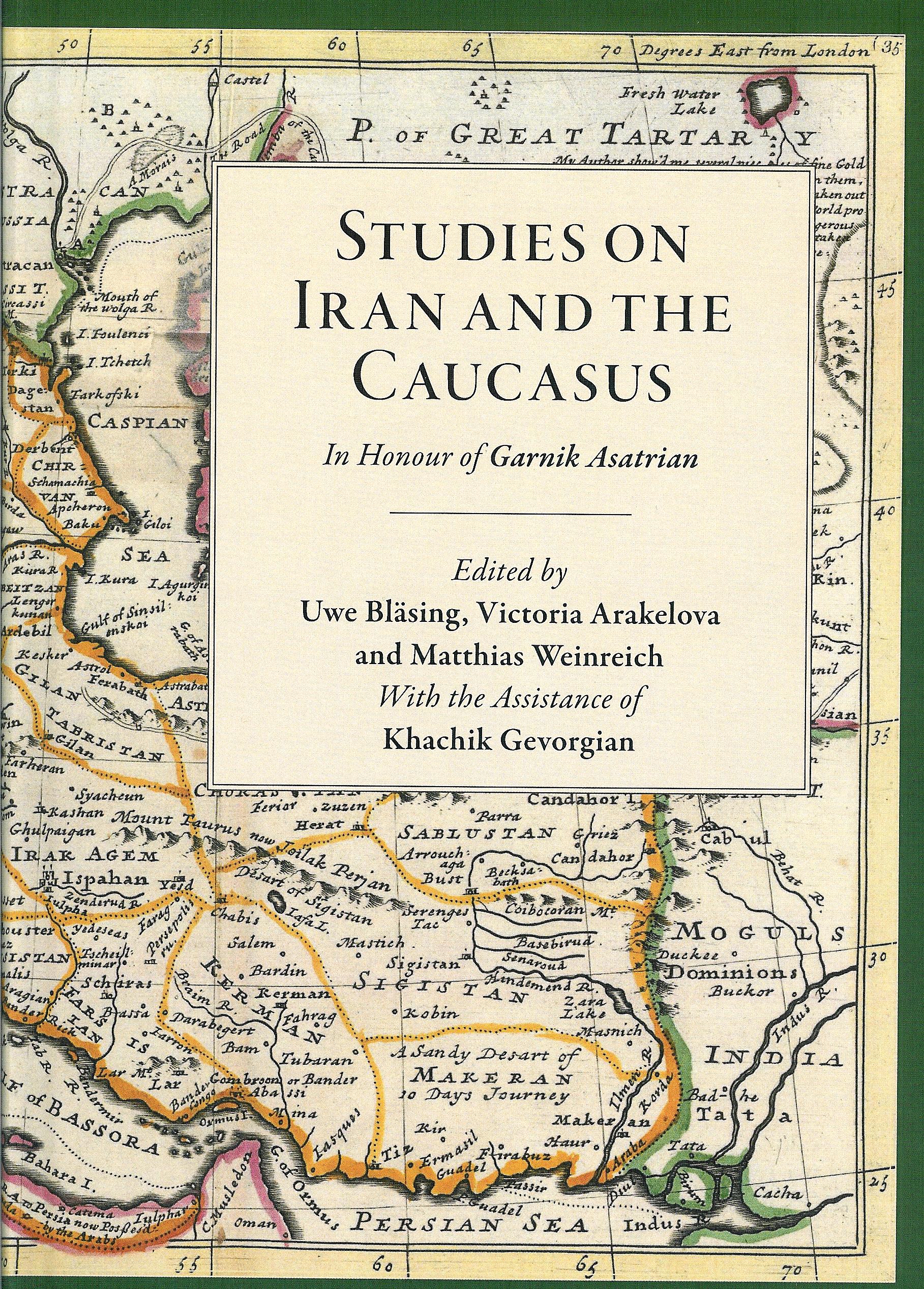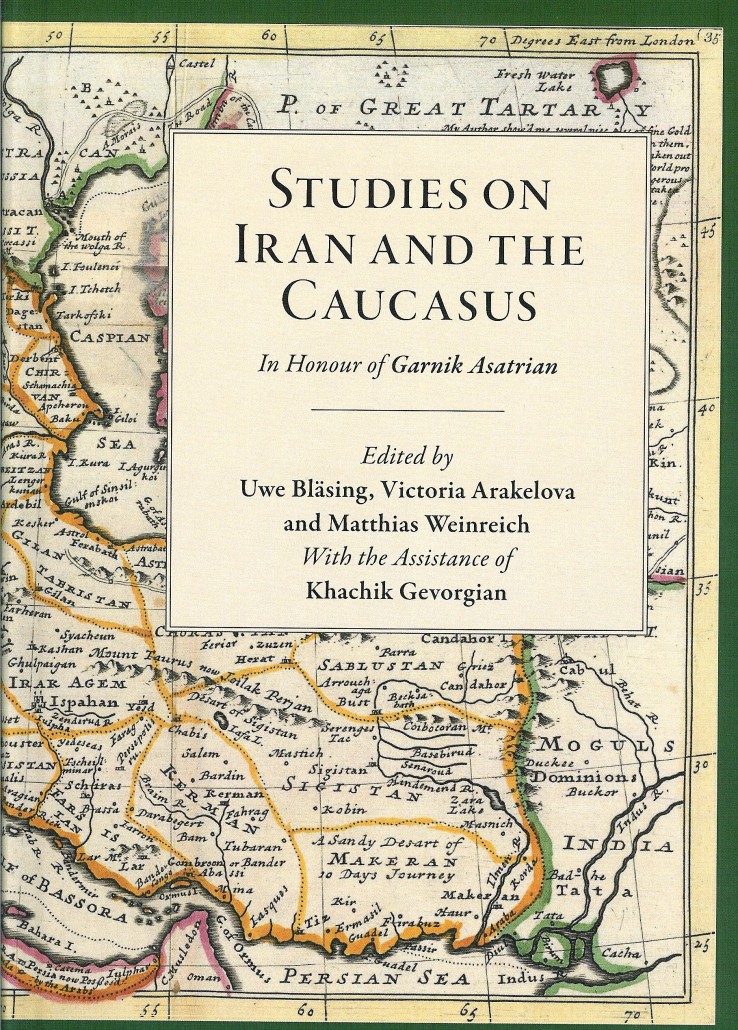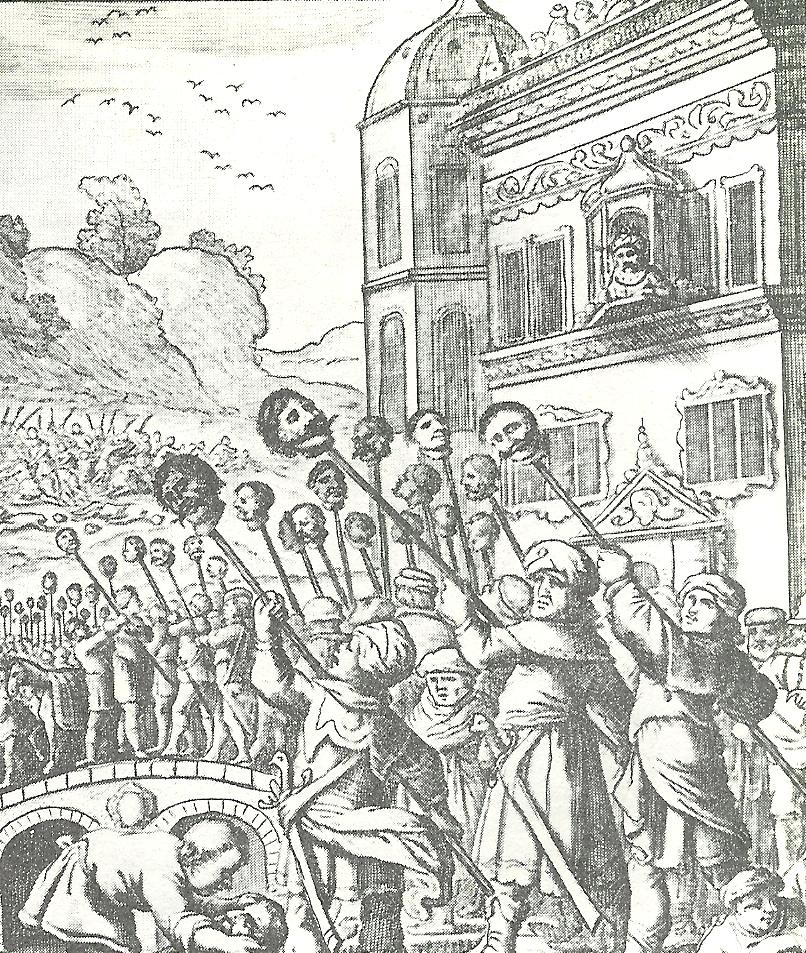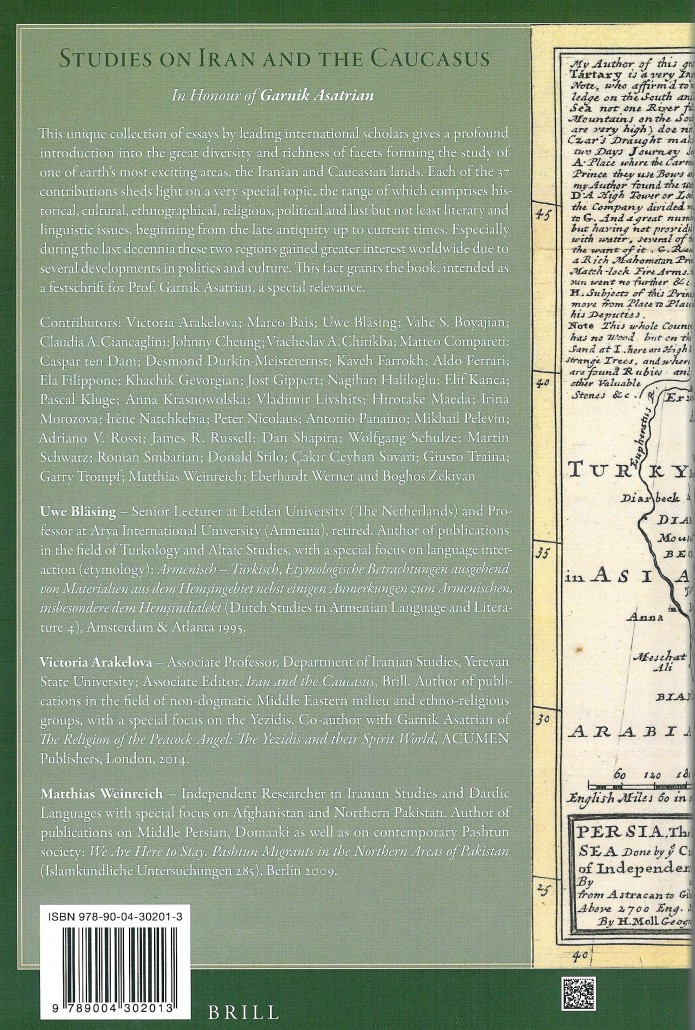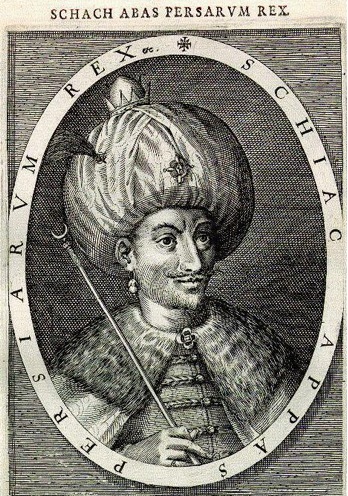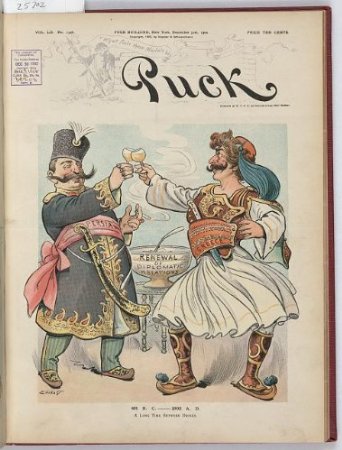Brill Publications in Leiden, which is a major international academic venue for scholarly works, has just published a seminal book entitled:
Studies on Iran and The Caucasus (In Honour of Garnik Asatrian), Leiden: Brill, 2015
The book has been edited by Uwe Bläsing, University of Leiden, Victoria Arakelova, Yerevan State University and Matthias Weinreich, along with the Assistance of Khachik Gevorgian. The Bibliographia Iranica provides an overview of the table of contents…
Front cover of the 2015 text “Studies on Iran and The Caucasus (In Honour of Garnik Asatrian), Brill, 2015“. As noted in the Brill webpage: “This unique collection of essays by leading international scholars gives a profound introduction into the great diversity and richness of facets forming the study of one of earth’s most exciting areas, the Iranian and Caucasian lands. Each of the 37 contributions sheds light on a very special topic, the range of which comprises historical, cultural, ethnographical, religious, political and last but not least literary and linguistic issues, beginning from the late antiquity up to current times. Especially during the last decennia these two regions gained greater interest worldwide due to several developments in politics and culture. This fact grants the book, intended as a festschrift for Professor Garnik Asatrian, a special relevance.” Professor Garnik S. Asatrian is the Chair of the Iranian Studies Department at Yerevan State University and the Editor of the “Iran and the Caucasus” journal, BRILL, Leiden-Boston). Professor Victoria Arakelova (Associate Professor, Department of Iranian Studies, Yerevan State University) is the Associate Editor, of “Iran and the Caucasus”, BRILL, Leiden.
The textbook has also published an article by Kaveh Farrokh
This paper provides an overview of the Safavid military forces and reforms at the time of Shah Abbas I (r.1587-1629), especially with the promotion of the new Ghulam units to counterbalance the traditional Qizlibash forces which had bought the Safavids to power at the time of Shah Ismail (r. 1502-1524). Other significant military reforms were the introduction of firearm units such as the Tofanchi (musketeers), Jazayerchis (bearers of larger and heavier muskets) and Toopchis (artillerymen). The introduction of these reforms proved instrumental in Shah Abbas I’s successes in expelling the Ottomans from Tabriz (1603) and Yerevan (1604), defeating the Ottoman counteroffensive in Azerbaijan (1605) and the capture of Shamakhi (1606) and Ganja (1606). Large numbers of Armenians, Kurds and Azeris had been displaced from their homelands by Shah Abbas I as a result of his scorched earth tactics against invading Ottoman forces in 1606-1607. Shah Abbas’ military successes led to the Ottoman-Safavid peace treaty of 1612 which affirmed all of the Iranian conquests since the recapture of Tabriz. The Safavid army had to fight a series of battles in Georgia (1613-1623) which led to a new Ottoman war (1616). The Safavid army defeated the Ottoman offensives in Yerevan and Ardabil (1616-1618) obliging the Ottomans to negotiate a new peace treaty which affirmed all of Shah Abbas’ conquests since 1603.
Rare drawing by a European traveller who witnessed the aftermath of the liberation of Tabriz by Shah Abbas I on October 21, 1603. Local Azari citizens welcomed the Iranian Safavid army as liberators and took harsh reprisals against the defeated Ottoman Turks who had been occupying their city. Many unfortunate Turks fell into the hands of Tabriz’s citizens and were decapitated (Picture Source: Matofi, A., 1999, Tarikh-e-Chahar Hezar Sal-e Artesh-e Iran: Az Tamadon-e Elam ta 1320 Khorsheedi, Jang-e- Iran va Araqh [The 4000 Year History of the Army of Iran: From the Elamite Civilization to 1941, the Iran-Iraq War]. Tehran: Entesharat-e Iman, p.63).
Back cover of the 2015 text “Studies on Iran and The Caucasus (In Honour of Garnik Asatrian), Brill, 2015“. The Brill webpage cites the following scholars as contributors to the volume: Victoria Arakelova; Marco Bais; Uwe Bläsing; Vahe S. Boyajian; Claudia A. Ciancaglini; Johnny Cheung; Viacheslav A. Chirikba; Matteo Compareti; Caspar ten Dam; Desmond Durkin-Meisterernst; Kaveh Farrokh; Aldo Ferrari; Ela Filippone; Khachik Gevorgian; Jost Gippert; Nagihan Haliloğlu; Elif Kanca; Pascal Kluge; Anna Krasnowolska; Vladimir Livshits; Hirotake Maeda; Irina Morozova; Irène Natchkebia; Peter Nicolaus; Antonio Panaino; Mikhail Pelevin; Adriano V. Rossi; James R. Russell; Dan Shapira; Wolfgang Schulze; Martin Schwarz; Roman Smbatian; Donald Stilo; Çakır Ceyhan Suvari; Giusto Traina; Garry Trompf; Matthias Weinreich; Eberhardt Werner and Boghos Zekiyan.
[Click to enlarge] Shah Abbas I (r. 1587-1629) as depicted in a European copper engraving made by Dominicus Custos citing him as “Schach Abas Persarum Rex” or “Shah Abbas the Great monarch of Persia”. Note how Custos makes a particular emphasis on linking Shah Abbas to the “Mnemona Cyrus” (the Memory of Cyrus the Great of Persia). Shah Abbas’ victories over the Ottomans weakened them against the Europeans to the West, and especially in the Balkans and Eastern Europe.
On a humorous note: A long time between drinks! A 1902 cartoon entitled “491 BC-1902 CE” in Puck magazine (v. 52, no. 1348, 1902, December 31) depicting “Persia” (at left) toasting “Greece” (at right) from a punch bowl labeled “Renewal of Diplomatic Relations” (Source: US Library of Congress).

